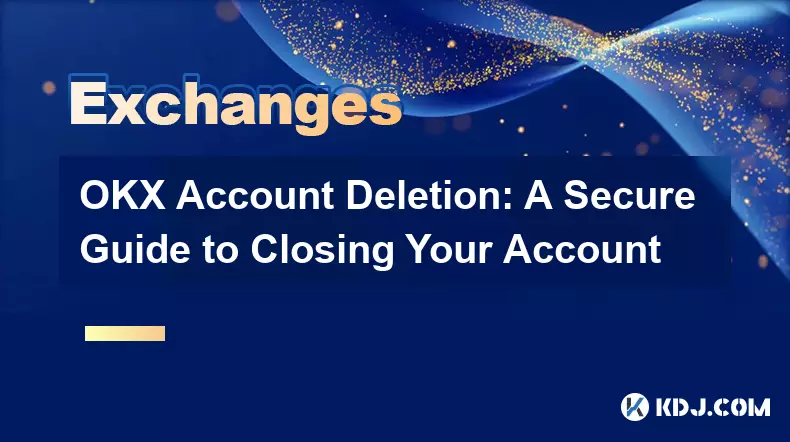-
 bitcoin
bitcoin $102877.190955 USD
1.88% -
 ethereum
ethereum $3430.435064 USD
4.52% -
 tether
tether $0.999264 USD
-0.05% -
 xrp
xrp $2.307310 USD
4.49% -
 bnb
bnb $987.740692 USD
3.82% -
 solana
solana $161.947760 USD
3.97% -
 usd-coin
usd-coin $0.999712 USD
-0.05% -
 tron
tron $0.292810 USD
2.93% -
 dogecoin
dogecoin $0.179738 USD
10.70% -
 cardano
cardano $0.580716 USD
8.75% -
 hyperliquid
hyperliquid $42.463448 USD
8.40% -
 chainlink
chainlink $15.763437 USD
7.05% -
 zcash
zcash $649.595636 USD
17.21% -
 bitcoin-cash
bitcoin-cash $511.610261 USD
7.19% -
 stellar
stellar $0.292537 USD
7.91%
Binance Account Security Strategy: A 2025 Best Practices Guide
Secure your Binance account with strong passwords, 2FA via authenticator apps, and never share login details—beware of phishing and always verify official URLs.
Nov 04, 2025 at 11:15 pm

Securing Your Binance Login Credentials
1. Use a unique and complex password that combines uppercase letters, lowercase letters, numbers, and special characters. Avoid using personal information such as birthdays or common words.
- Enable two-factor authentication (2FA) using an authenticator app like Google Authenticator or Authy. Do not rely solely on SMS-based 2FA due to the risk of SIM swapping attacks.
- Regularly update your password every 90 days and never reuse passwords across different platforms, especially within the crypto ecosystem.
- Store your password securely using a trusted password manager such as Bitwarden or 1Password, which encrypts your credentials and reduces the chance of human error.
- Be cautious of phishing attempts that mimic Binance’s login page. Always verify the URL is https://www.binance.com and check for SSL indicators in the browser.
Managing API Keys with Maximum Caution
1. When creating API keys on Binance, assign minimal permissions necessary—avoid enabling withdrawal rights unless absolutely required for specific automated strategies.
- Restrict API key access by IP address if you operate from a fixed location or server. This prevents unauthorized usage even if the key is compromised.
- Rotate API keys periodically and deactivate any unused keys immediately through the API management dashboard.
- Never expose API keys in public repositories, code snippets, or chat logs. Treat them like physical wallet seeds and store them in encrypted environments.
- Monitor API usage logs regularly for unusual activity, such as unexpected order placements or data requests originating from unfamiliar locations.
Protecting Against Social Engineering and Phishing
1. Scammers often impersonate Binance support staff via email, social media, or fake customer service portals. Always initiate contact only through official channels listed on Binance’s verified website.
- Be skeptical of unsolicited messages offering free tokens, account recovery assistance, or urgent security alerts. These are common tactics to extract login details.
- Educate yourself on the appearance of legitimate Binance communications. Official emails come from domains ending in @binance.com and contain personalized account references.
- Report suspicious websites or Telegram groups claiming affiliation with Binance using the platform’s built-in reporting tools.
- Train family members or associates who may have access to your devices about the risks of disclosing account information, even under pressure or false emergencies.
Hardware Wallet Integration and Fund Isolation
1. For long-term holdings, transfer assets from your Binance account to a hardware wallet such as Ledger or Trezor. Exchanges are targets; cold storage drastically reduces exposure.
- Use Binance Smart Chain (BSC) and ERC-20 compatible wallets with verified firmware updates to prevent transaction manipulation during transfers.
- Test withdrawals with small amounts first to confirm correct wallet configuration and network selection before moving larger sums.
- Maintain multiple layers of backup: store seed phrases offline in fireproof safes, use metal backups, and avoid digital photos or cloud storage.
- Consider setting up a dedicated device for managing crypto transactions—never browse untrusted sites or install third-party apps on this machine.
Frequently Asked Questions
What should I do if my Binance account gets locked?Immediately visit the official Binance help center and follow the account recovery process. Provide valid identification documents and avoid sharing sensitive data with anyone claiming to be support agents via unofficial channels.
Can I trust third-party bots that use my Binance API key?Only if the bot developer is transparent about their security practices, uses encrypted connections, and does not request withdrawal permissions. Conduct thorough research and consider running bots on isolated systems.
How can I detect a fake Binance app?Check the developer name on app stores—official apps are published by “Binance Holdings Limited.” Review user feedback, download counts, and look for HTTPS connectivity when logging in.
Is it safe to keep stablecoins on Binance?While stablecoins are less volatile, they remain exposed to exchange-level risks such as hacking or regulatory seizures. Limit balances based on immediate trading needs and move excess funds to self-custody solutions.
Disclaimer:info@kdj.com
The information provided is not trading advice. kdj.com does not assume any responsibility for any investments made based on the information provided in this article. Cryptocurrencies are highly volatile and it is highly recommended that you invest with caution after thorough research!
If you believe that the content used on this website infringes your copyright, please contact us immediately (info@kdj.com) and we will delete it promptly.
- Ripple (XRP) in 2026: Hold or Fold? A Look at XRP's Future and Emerging DeFi Alternatives
- 2025-11-08 18:35:01
- Zcash ZEC Coin Price Explosion: From Privacy Niche to Center Stage
- 2025-11-08 18:55:01
- Berachain Price Prediction: Navigating the Honeycomb Hype in Crypto
- 2025-11-08 18:55:01
- Arthur Hayes, Gold, and Bitcoin: A Modern Monetary Trinity?
- 2025-11-08 19:15:01
- Shiba Inu's Next Move: Navigating a Shifting Market
- 2025-11-08 19:20:01
- Pakistan's Crypto Crossroads: Balancing Opportunity with Asset-Backed Realities
- 2025-11-08 19:20:01
Related knowledge

Common Mistakes to Avoid on OKX: A Guide for New Traders
Nov 04,2025 at 03:37pm
Understanding the Interface Before Trading1. New traders often jump into placing orders without fully exploring the OKX platform layout. Taking time t...

OKX TradingView Integration: A Guide to Advanced Chart Analysis
Nov 02,2025 at 03:37am
OKX and TradingView: Bridging the Gap for Professional Traders1. OKX, one of the leading cryptocurrency exchanges, has integrated with TradingView to ...

Finding Your OKX Deposit Address: A Quick and Safe Guide
Nov 05,2025 at 01:15pm
Finding Your OKX Deposit Address: A Step-by-Step Process1. Log into your OKX account using your registered credentials. Ensure you are accessing the o...

OKX Savings Guide: A Low-Risk Strategy for Earning Crypto
Nov 05,2025 at 06:55am
Understanding OKX Savings and Its Role in Crypto Earnings1. OKX Savings offers users a straightforward method to earn passive income by leveraging idl...

OKX Account Deletion: A Secure Guide to Closing Your Account
Nov 05,2025 at 08:44am
Understanding the Implications of Account Closure1. Closing your OKX account permanently removes access to all associated trading features, including ...

Mastering the OKX Mobile App: Tips for Trading on the Go
Nov 05,2025 at 01:19am
Streamlined Navigation for Efficient Trading1. The OKX mobile app features a clean and intuitive interface that allows traders to access key functions...

Common Mistakes to Avoid on OKX: A Guide for New Traders
Nov 04,2025 at 03:37pm
Understanding the Interface Before Trading1. New traders often jump into placing orders without fully exploring the OKX platform layout. Taking time t...

OKX TradingView Integration: A Guide to Advanced Chart Analysis
Nov 02,2025 at 03:37am
OKX and TradingView: Bridging the Gap for Professional Traders1. OKX, one of the leading cryptocurrency exchanges, has integrated with TradingView to ...

Finding Your OKX Deposit Address: A Quick and Safe Guide
Nov 05,2025 at 01:15pm
Finding Your OKX Deposit Address: A Step-by-Step Process1. Log into your OKX account using your registered credentials. Ensure you are accessing the o...

OKX Savings Guide: A Low-Risk Strategy for Earning Crypto
Nov 05,2025 at 06:55am
Understanding OKX Savings and Its Role in Crypto Earnings1. OKX Savings offers users a straightforward method to earn passive income by leveraging idl...

OKX Account Deletion: A Secure Guide to Closing Your Account
Nov 05,2025 at 08:44am
Understanding the Implications of Account Closure1. Closing your OKX account permanently removes access to all associated trading features, including ...

Mastering the OKX Mobile App: Tips for Trading on the Go
Nov 05,2025 at 01:19am
Streamlined Navigation for Efficient Trading1. The OKX mobile app features a clean and intuitive interface that allows traders to access key functions...
See all articles





















![The Graph Price Prediction [GRT Crypto Price News Today] The Graph Price Prediction [GRT Crypto Price News Today]](/uploads/2025/11/07/cryptocurrencies-news/videos/690d4df44fe69_image_500_375.webp)



















































